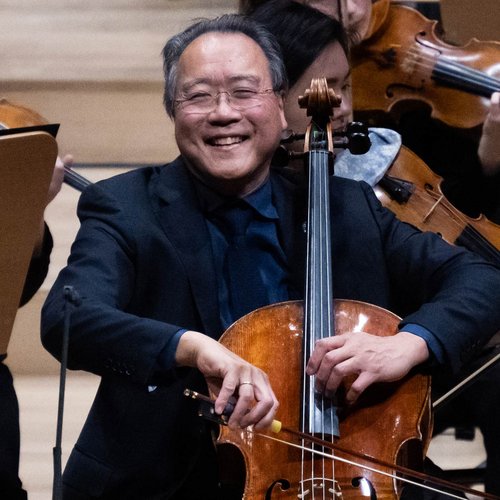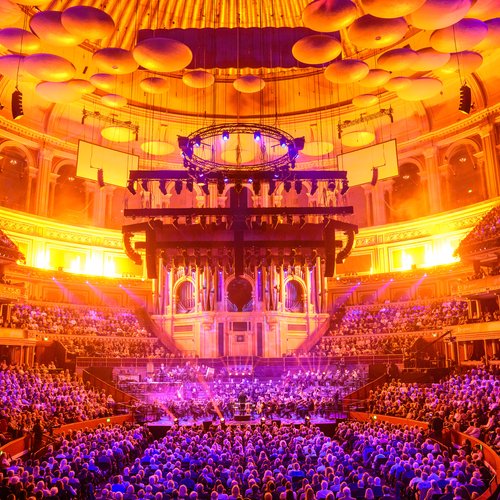What’s the difference between a symphony, a concerto, and a sonata?
20 May 2024, 14:04 | Updated: 20 May 2024, 14:08

Symphony, concerto, sonata... what’s the difference? The main distinctions lie in the roles of soloists, and their place in, or in front, of the orchestra.
Listen to this article
The words ‘symphony’ and ‘concerto’ crop up time and time again in classical music. From the famous Symphony No.5 of Ludwig van Beethoven and the magnificent final symphony, Symphony No.41 ‘Jupiter’, of Wolfgang Amadeus Mozart, to Elgar’s famous Cello Concerto in E minor, many famous pieces bear these words.
Even the most beloved works, imprinted on the memories of music aficionados and casual listeners alike, can be born with a generic title. Think of the powerful work that’s either No.1, or close, in the Classic FM Hall of Fame most years: Rachmaninov’s Piano Concerto No.2.
But what is a ‘symphony’ and what is a ‘concerto’, why do so many pieces have this name, and what’s the difference? We settle the score.
Read more: What’s the difference between a symphony and a philharmonic orchestra?

Florence Price’s groundbreaking Symphony No.1 ‘Finale’ at Classic FM Live
What’s the difference between a symphony and a concerto?
The main difference between a symphony and a concerto today lies in the role of a soloist. Where a symphony is written for a standalone orchestra, a concerto is written for a soloist – or multiple soloists – and an orchestra, the latter acting as a rich accompaniment to the former.
In a symphony, the orchestra carries all main melodies, and performs transcendent moments of softs and louds, to make up a magnificent whole. There may be soloists, and solo passages within the orchestra, but nobody is out at the front starring in the whole show.
The orchestra plays a similar role in a concerto, but it is subservient and supports a soloist, who stands separately, in front of the orchestra, and who takes on the main melodies, performing moments of virtuosic brilliance.
Concertos more commonly have three movements, while symphonies, especially since the Romantic era, are comfortable with four.
What is a concerto?
A concerto is a piece of music featuring a solo musician – or group of solo musicians – performing with an orchestra. The orchestra is typically playing an accompanying role, and its relation to the soloist is to combine and complement the soloist’s music in some moments, while contrasting, competing or alternating with them in other moments.
Some passages of a concerto may feature the soloist playing alone, or with very few instruments from the orchestra accompanying them, while other passages may see the soloist take a rest, either playing along with the orchestra for a few phrases, or resting altogether while the orchestra takes off with the tune.
A concerto typically has three movements, a fast movement that introduces the main melodies and themes, followed by a slower movement, which is in turn followed by a fast finale, which typically shows off the soloist’s technique with a final, memorable flourish.
Music started being scrawled with the word ‘concerto’ as early as the 15th century, with the form we recognise today becoming embedded in the 17th and 18th centuries.
‘Concerto’ evokes the Italian word ‘agreement’, or of being ‘in concert’. The other meaning could be from the Latin –are or –atus, which is ‘to contend’.
This meaning – or either one of these meanings – originally evoked many different types of music, whether they were just bringing together multiple instrumentalists, or a unified combination of instruments accompanying a singer or instrumentalist, but today it typically is the latter that we think of as the concerto.
Read more: The 15 greatest symphonies of all time

Rachmaninov Piano Concerto No. 2… for solo piano! | Arsha Kaviani
What is a symphony?
When we say symphony, we mean any work written for a large group of musical instruments, known as an orchestra, or symphony orchestra. Symphonies typically have four separate movements, although many have fewer and many have more.
While we think of a symphony as a large-scale work for orchestra today, when the word ‘symphony’ – or ‘sinfonia’ – started appearing on a title pages of piece at the end of the 16th century, it was often for a standalone excerpt of music written as an overture to introduce an opera or a ballet.
By the 18th century, symphonies were expanding in size, both in terms of the number of musicians they were written for, and in terms of the length of the piece. Symphonies started falling into the pattern of having three or four movements – just like concertos – which were fast, slow, and faster.
Early pioneers of the symphony included Italy’s Giovanni Battista Sammartini (1698-1775) and Johann Stamitz (1717-57), while Classical era composers Haydn and Mozart expanded the forces and complexity, and Romantic greats Beethoven and Brahms did so further, creating works we think of as the pinnacle of the genre today.
The term ‘symphony’ comes from two ancient Greek words – syn (‘together’) and phoneh (‘sounding’).
If you watch a symphony orchestra today, you would experience between 30 and 100 musicians playing on stage at the same time in magnificent harmony.
Read more: What is a symphony? We explain…

Ingolf Wunder - Mozart's Piano Sonata in F Major
What is a sonata?
Both concertos and symphonies belong to the group of musical compositions known as sonatas, deriving from the Italian ‘sonare’, ‘to sound’, which emerged as a way to describe any piece of music for an instrument, or group of instruments, as distinct from one that was sung by voices, known as a cantata.
The word sonata used alone, or in the name of a piece, more commonly refers to a smaller combination of instruments – perhaps a solo piano or solo violin; perhaps a piano and a flute – which is still in three movements but not calling for large ensembles and orchestras like concertos and symphonies.
Sonatas can still have three or four movements, and follow the same form, as concertos and symphonies.
One of the main forms you find in sonatas, especially their first movement, is named for them: sonata form, a formalised A-B-A form, which within the distinct sections follows certain rules: those of introducing the main themes in the ‘exposition’ section, elaborating on those in the ‘development’ section, and then returning home to the main themes in the ‘recapitulation’, which brings the movement to a conclusion.
Sonata form is used in both symphonies and concertos.











































